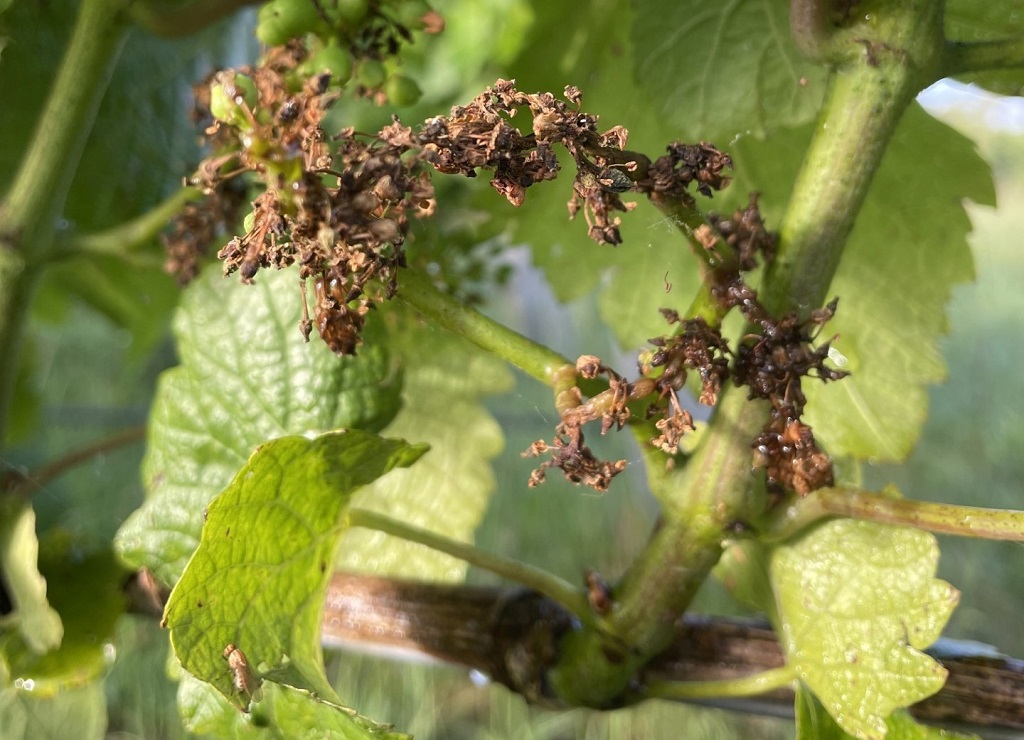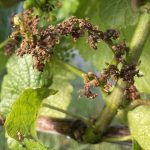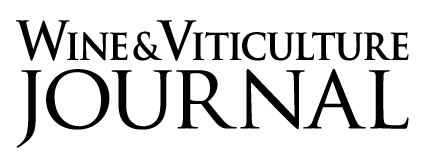Necrotic rachis resulting from PSS. Image courtesy Adrian Utter
A new survey has been launched to assess the extent and impact of bacterial inflorescence rot (BIR) in Australian vineyards. This research, conducted by Dr Andrea Roberts-Davison at Melbourne Polytechnic, aims to provide growers with much-needed practical advice by gathering data on the prevalence, financial losses, and viticultural practices that may influence the disease’s spread.
The survey is open to Australian winegrape growers, who are encouraged to contribute their insights before it closes on Friday, 2 May.
All growers—whether they have encountered the disease or not—are encouraged to participate and share the survey with their peers. Responses will be kept strictly confidential, requiring only a postcode for general geographic mapping.
The motivation for this research was sparked in 2024 during a conversation Dr Roberts-Davison had with David Bicknell, chief winemaker at Oakridge, who described experiencing a devastating yield loss due to a mysterious bacterial disease that caused vines to suddenly drop their bunches. Dr Roberts-Davison’s curiosity led her to investigate further, revealing the culprit as Pseudomonas syringae pv. syringae (PSS), the pathogen responsible for BIR. Recognising the potential threat to viticulture, she collaborated with Victorian viticulturalists Adrian Utter and Steve Faulkner to assess whether BIR and other bacterial vine diseases pose an increasing risk, particularly in the context of climate change.
BIR, caused by PSS but often mistaken for downy mildew, is an emerging concern capable of causing significant financial loss to grapegrowers. The risk may be exacerbated by the increasing incidence of heavy spring rain events linked to climate change. However, there is limited data on its current distribution and economic impact. The survey will focus on three key aspects:
- Determining the current spread of BIR and whether it is continuing to expand.
- Assessing the financial losses experienced by growers and whether these are increasing annually.
- Identifying vineyard practices that may either exacerbate or mitigate the effects of BIR to guide future research and improve best-practice recommendations.
Preliminary findings on the spread and financial impact of BIR will be presented at the AWITC in July. The aim is to secure funding for further research, including the development of LAMP technology for in-field diagnosis of the disease.
To find out more, growers can access Andrea’s comprehensive 2025 literature review on bacterial inflorescence rot here.
By contributing to this research, participants will help build a clearer picture of BIR, support the development of better disease management strategies for the industry, and play a crucial role in securing much-needed funding for further research and technological advancements in disease detection and prevention.
Dr Roberts-Davison has written a literature review on the risk of bacterial inflorescence rot for the Grapegrower & Winemaker magazine which is set to be published in the upcoming March edition. To preview the article now, you can read Dr Roberts-Davison’s summary: Bacterial Inflorescence Rot of Grapevines Caused by Pseudomonas syringae pv. syringae here.
Are you a Daily Wine News subscriber? If not, click here to join our mailing list. It’s free!





















